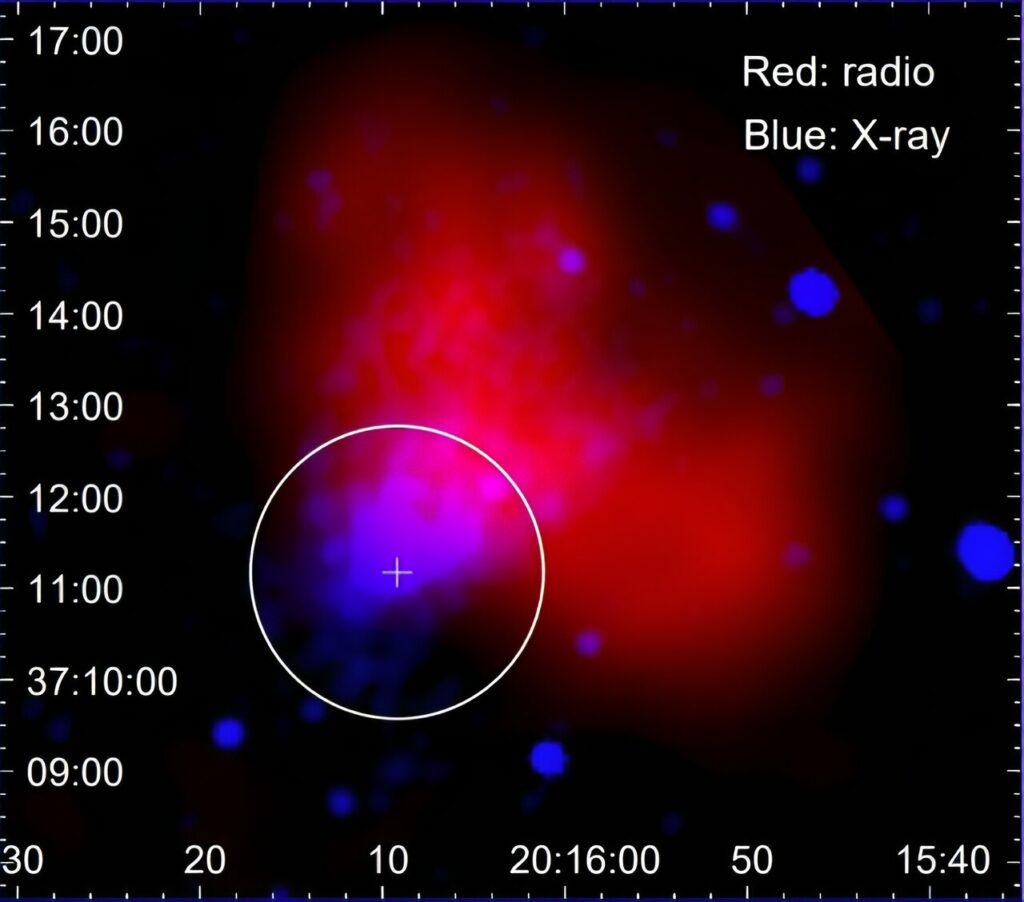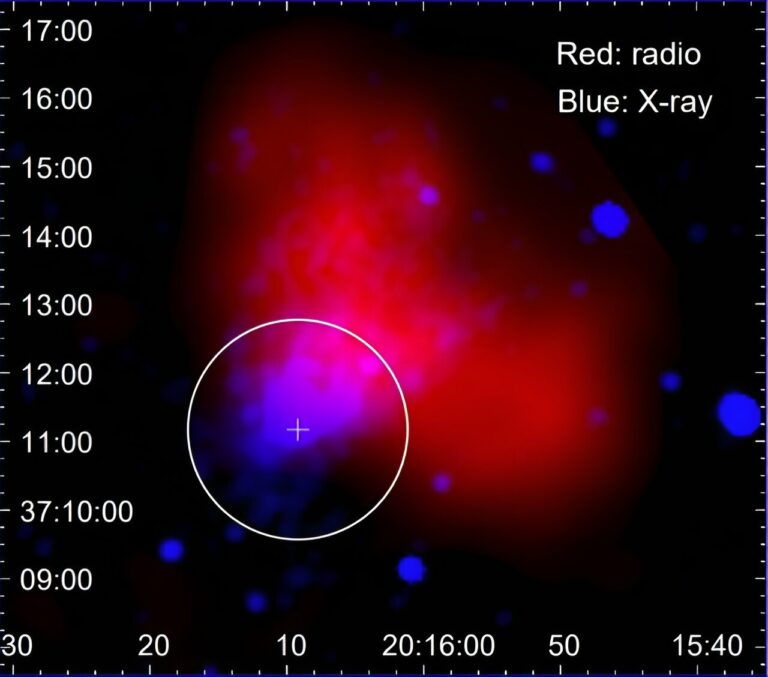Chinese astronomers detect radio pulsar within a supernova remnant
A radio pulsar has been detected in the supernova remnant CTB 87 by astronomers from Nanjing University in China and other institutions. This discovery was made using the Five-hundred-meter Aperture Spherical radio Telescope (FAST) and is detailed in a paper published on the arXiv pre-print server on February 1.
Pulsars are highly magnetized neutron stars that emit beams of electromagnetic radiation as they rotate. They are typically observed through short bursts of radio emission, but can also be detected using optical, X-ray, and gamma-ray telescopes.
CTB 87 is a plerionic supernova remnant with an X-ray luminosity much weaker than the Crab Nebula in the 0.15−3 keV band. It contains a pulsar wind nebula with a trailing morphology in X-rays. However, no such object has been found in this supernova remnant until now.
A team of astronomers led by Qian-Cheng Liu from Nanjing University investigated a point-like X-ray source in CTB 87 called CXOU J201609.2+371110. They discovered radio pulses from this source using FAST.
The researchers wrote, “We report on our discovery of the radio pulsar, PSR J2016+3711, in supernova remnant CTB 87, with a ∼ 10.8???? significance of pulses, which confirms the compact nature of the X-ray point source in CTB 87.”
According to the paper, PSR J2016+3711 is located approximately 43,400 light years away. It has a spin period of 50.8 milliseconds and a dispersion measure of around 428 pc/cm3. The pulsar’s spin down luminosity is measured to be 22 undecillion erg/s, and its characteristic age is estimated to be 11,100 years. PSR J2016+3711 is therefore the first pulsar in a supernova remnant to be detected using FAST.

The equatorial surface dipole magnetic field strength of PSR J2016+3711 was determined to be 1.9 TG. Additionally, the study revealed that the radio pulse profile of this pulsar is narrow, lacking broad wings. This suggests that either the radio beam originating near the magnetic polar cap is inherently narrow or the line of sight only sweeps across a small portion of a broader beam.
In addition to this, Liu’s team analyzed data from NASA’s Fermi spacecraft to investigate potential gamma-ray pulsation from PSR J2016+3711. However, no gamma-ray pulsation was detected from this source. The researchers emphasized the need for further observations to definitively rule out PSR J2016+3711 as a gamma-ray emitter.
The authors of the study concluded that conducting more follow-up radio observations over an extended period of time would be beneficial in obtaining a more precise timing solution. This, in turn, could be utilized to analyze the gamma-ray data and search for pulsation.
This article is republished from PhysORG under a Creative Commons license. Read the original article.
Do not forget to share your opinion with us to provide you with the best posts !





0 Comments